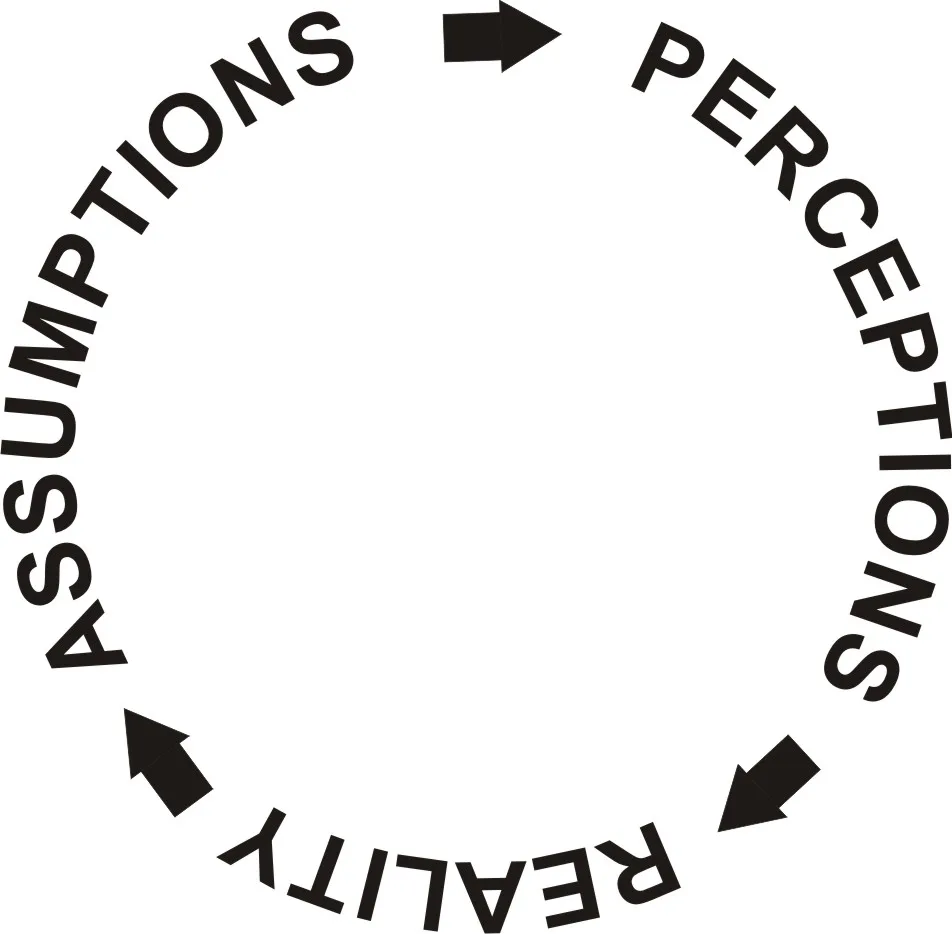Our assumptions work together to create our perceptions, and our perceptions create our reality. Let’s take a closer look at how this process works.
Suppose I have an assumption that, “Everybody in the world is out to get me.” That assumption will set my perception filter to look for evidence that supports my assumption. So any time anyone acts towards me in a way that can be interpreted as negative, I add that to my collection of evidence that “everybody is out to get me.”
At the same time, something interesting happens. Because my perception filter is set to look for evidence that people are out to get me, I’m going to look for that evidence even when people aren’t out to get me. Suppose someone isn’t out to get me, but is instead trying to do something nice for me. Since my perception filter is set for “people are out to get me,” how am I going to interpret this person’s nice actions? The answer is that since my assumption is that everyone is out to get me, this person can’t really be doing anything nice just to be nice. So I’m going to conclude instead that this person is only being nice in order to get something from me or to take advantage of me. My perceptions will cause me to believe that the reason this person is being nice is to set me up so that I’ll be caught off-guard.
So with my perception filter set in this way, everybody looks like they’re out to get me, and I’ve found evidence to confirm my assumption, because to me, even people who aren’t out to get me look like people who are out to get me.
Assumptions, Perceptions, and Reality
How do these assumptions and perceptions work together to create my reality? In the example above, imagine I’m someone trying to do something nice for you. I’m doing it because I think you’re a good person and I’d like to be your friend. But since your perception filter is set to only look for evidence that confirms your assumption that “everyone is out to get me,” you’re going to treat my attempts at being nice as attempts to take advantage of you.
How long would I continue to try to be nice to you if you continue to treat me as if I’m out to get you? Probably not for very long. Eventually I’m going to get tired of being treated like I’m out to get you, and I’ll give up and go away. The longer you continue to act on this particular assumption and perception, the more nice people you’re going to drive away. Eventually the only people left willing to interact with you will be people who are out to get you. So your assumptions and your perceptions have worked together to create a reality in which everybody remaining in your life really is out to get you.
Emotional aggression is usually the result of assumptions that others should be responsible for our emotional states. One way this could occur is if I assume that my partner should be responsible for my happiness. If I make such assumptions, then I’ve given up responsibility for my own emotional states. If I do that, then my moods will always be at the mercy of someone else’s whims, since I’ve placed my own emotional freedom in their hands.
If I instead choose to assume that only I can be responsible for my own emotional well-being, I set my perception filter to reflect that assumption. I can then look for evidence to support that assumption. By looking for evidence that supports my assumption that “I must be responsible for my own emotional well-being,” I create a reality in which I can choose to be happy and content no matter how others respond or react to me.
Think about some assumptions you may be making about your emotions and moods. How have these assumptions altered your perceptions? How have these perceptions created your present reality? How might you change your assumptions to get different perceptions so that you can create a different reality?

